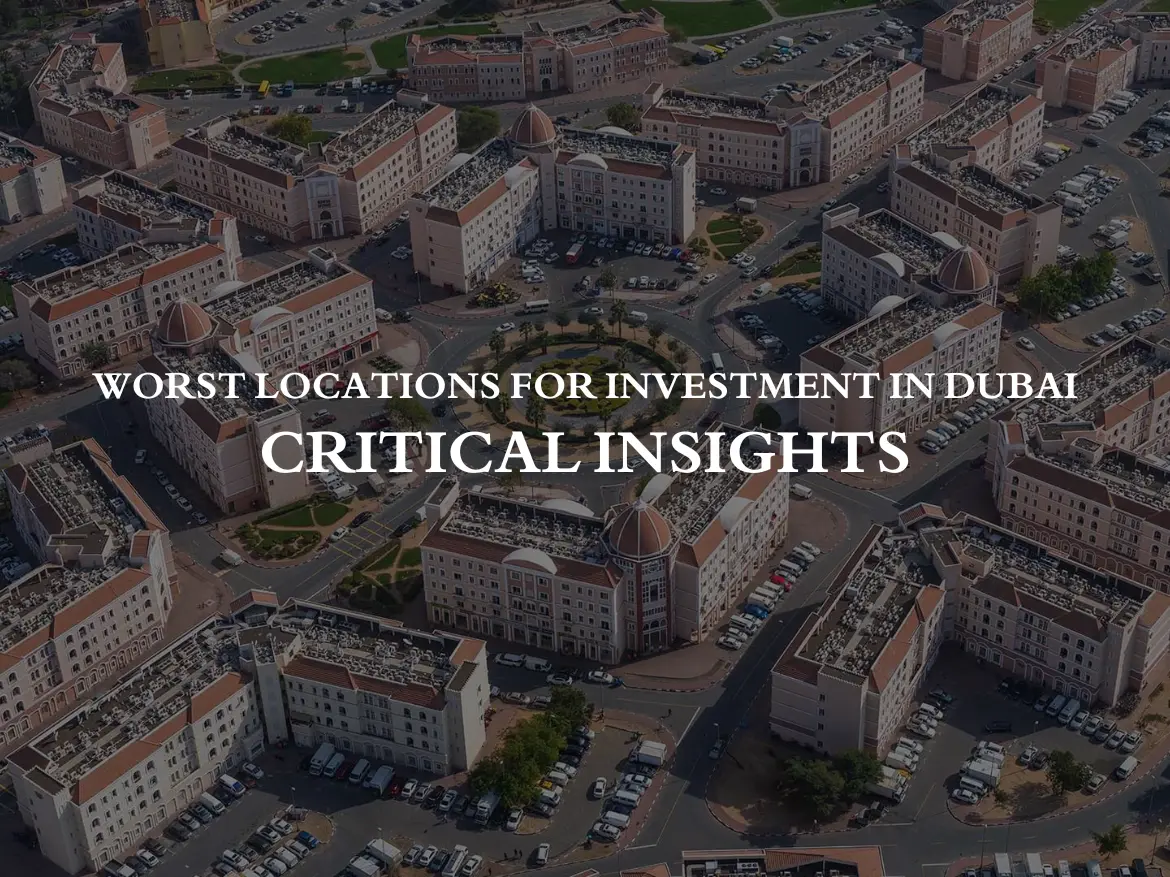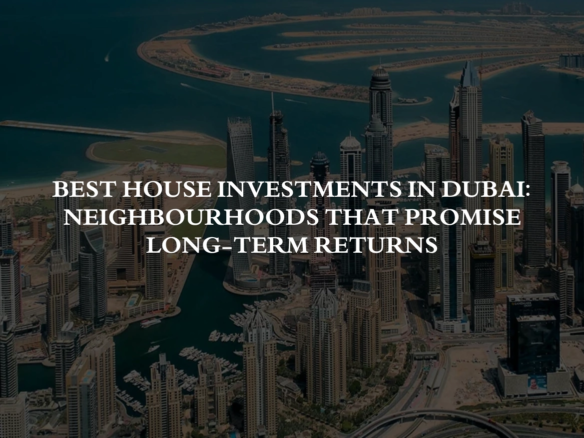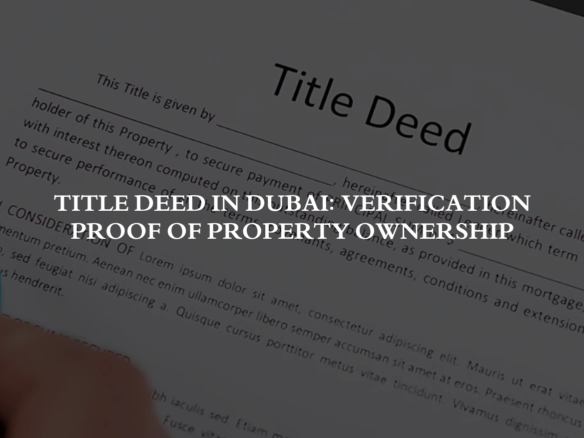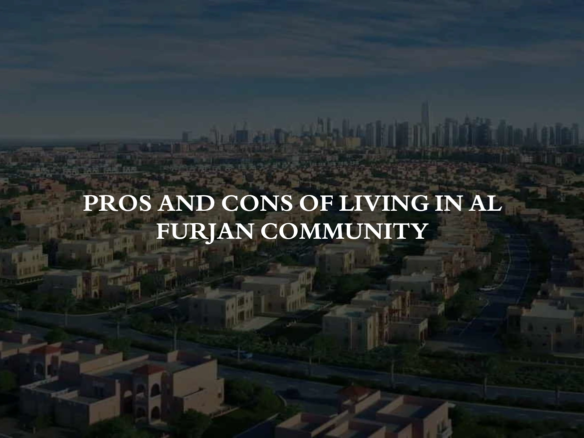Investing in real estate can be a thrilling and profitable venture, particularly in a bustling metropolis like Dubai. However, it’s essential to understand that not all areas yield the same returns. While I hesitate to label any location as the “worst” for investment, some places may not align with every investor’s criteria. This article aims to delve into the factors that influence the attractiveness of different locations in Dubai, helping you make informed decisions about where to invest your hard-earned money.
Understanding What Makes a Worst Locations for Investment in Dubai
Poor Infrastructure and Amenities
One of the primary indicators of a less favorable investment location is poor infrastructure. This includes a lack of parks, cleanliness, retail malls, schools, hospitals, and other essential amenities. Areas with limited access to these facilities often struggle to attract and retain residents, impacting property values and rental yields.
Transportation Links
Dubai’s metro system is still relatively young, but its importance cannot be overstated. Proximity to a metro station can significantly enhance a property’s appeal, offering convenient access across the city. Conversely, areas far from metro lines may be less attractive to potential tenants and buyers.
Environmental Factors
Environmental factors such as proximity to sewage plants or general cleanliness issues can also play a significant role in determining a location’s desirability. These elements can affect the overall living experience and thus influence investment decisions.
Ready to find a top-tier investment?
Let our experts guide you to Dubai's best opportunities.
Analyzing Specific Areas in Dubai
International City
International City is often mentioned as a less favorable investment location, but it’s crucial to understand the nuances. While the area has decent rental returns, capital appreciation can be challenging due to the age and construction quality of some buildings. However, its low ticket prices make it accessible to a broader pool of buyers, offering medium to good liquidity.
Dubai Land and Majan
Similarly, Dubai Land and Majan are areas that have reached a certain level of habitation but have not yet realized their full potential. These regions are still developing, and while they may not offer the highest returns currently, their future potential cannot be ignored.
Dubai Sports City
Dubai Sports City serves as an excellent example of how areas can evolve. In 2013, it lacked essential bus services, making it less attractive. Today, it is a well-developed area with robust infrastructure, appealing to both affordable and mid-high-end market segments.
The Role of Future Developments
Anticipating Infrastructure Upgrades
One of the critical aspects of investing in Dubai’s real estate market is anticipating future infrastructure developments. For instance, International City is expected to get a metro station due to its significant population. Investing in such areas before these upgrades can be a strategic move, provided you are willing to do the necessary groundwork to identify value.
Government Initiatives and Master Plans
Dubai is a master-planned city, and the government continuously works on developing various regions. No area is left abandoned; instead, infrastructure and amenities are gradually introduced. This long-term vision means that even less favorable areas today could become prime investment locations in the future.
Evaluating Investment Performance
Rental Returns vs. Capital Appreciation
When assessing Worst Locations for Investment in Dubai, it’s crucial to differentiate between rental returns and capital appreciation. Areas like International City may offer decent rental income but struggle with capital appreciation due to older, lower-quality buildings. Understanding this distinction helps tailor your investment strategy to your financial goals.
Managing Tenants and Legal Considerations
Tenant management can be particularly challenging in some areas, especially where rental demand is high but the quality of tenants varies. Legal shortcuts and careful management practices are essential to ensure a steady rental income and protect your investment.
Liquidity Concerns
Market Demand and Saleability
Liquidity, or the ease of selling a property, is another critical factor. Locations with lower ticket prices, such as International City, tend to attract a larger pool of buyers, enhancing liquidity. However, areas not well-served by public transport may require more time and effort to sell properties quickly.
Conclusion: Think Critically and Plan Strategically
In conclusion, while no location in Dubai can be outright labeled as the Worst Locations for Investment in Dubai, some areas may be less favorable based on current infrastructure, amenities, and market conditions. However, with Dubai’s continuous development and strategic government initiatives, these areas also hold potential for future growth. As an investor, it’s vital to think critically, conduct thorough research, and plan strategically to maximize your returns.
FAQs
1. What makes an investment location in Dubai less favorable?
A location may be considered less favorable due to poor infrastructure, limited amenities, lack of transportation links, and environmental factors like proximity to sewage plants.
2. Are there any areas in Dubai that are currently less developed but have potential?
Yes, areas like International City, Dubai Land, and Majan are still developing and have the potential for future growth with upcoming infrastructure projects.
3. How important is proximity to a metro station for property investment in Dubai?
Proximity to a metro station is crucial as it enhances accessibility and attractiveness for tenants and buyers, positively impacting property values and rental yields.
4. What should investors consider when evaluating rental returns vs. capital appreciation?
Investors should assess the quality of construction, age of buildings, and current market demand. Areas with older properties might offer decent rental returns but lower capital appreciation.
5. Can anticipating future developments improve investment outcomes in Dubai?
Absolutely. Investing in areas slated for future infrastructure upgrades, such as new metro stations, can lead to significant appreciation in property values over time.





Join The Discussion